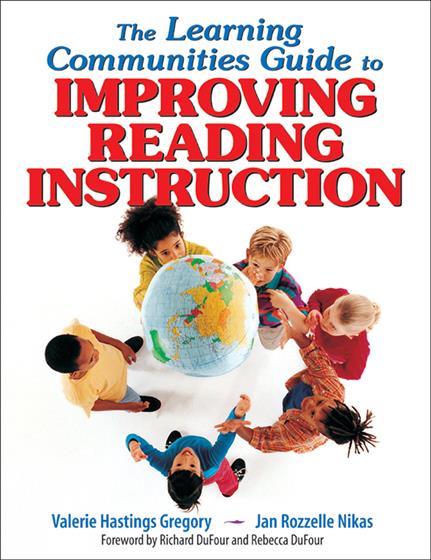Description
"This is an important book. The themes of attending to individual needs, providing assessment-driven instruction, and creating long-term, focused professional development plans are solid and consistent throughout."
Gay Ivey, Graduate Program Coordinator, Reading Education Program
James Madison University
"This book does a wonderful job of bridging the chasm that often exists between the separate worlds of higher education and K-12 educators. It applies powerful research findings and nontechnical, jargon-free advice for classroom teachers."
From the Foreword by Richard DuFour and Rebecca DuFour
Create professional learning communities to improve reading instruction and students' performance!
After observing over 300 classrooms, authors Valerie Hastings Gregory and M. Jan Rozzelle provide the perfect framework, knowledge, and tools necessary to help create a community of literacy coaches, leaders, and teachers to improve reading across schools. Demonstrating the critical link between adult learning and student learning that makes professional learning communities our best hope for improving reading and comprehension for today's students, this rich developmental resource provides solid information, powerful research findings, specific, pragmatic and proven strategies that teachers can apply immediately in the classroom.
Key features and benefits for implementation include:
- Reflective survey of "look-fors" to identify strengths and weaknesses
- How-to and when-to guidelines for strategies
- A learning communities model for professional development for reading instruction, providing the groundwork for effective and lasting improvement
- Valuable tables, charts, planning guides, and reproducibles to facilitate discussion, reflection, and goal setting
The Learning Communities Guide to Improving Reading Instruction will help educators identify and apply new approaches, improve and add to their instructional repertoire, and ultimately benefit their students' reading performance so no child or teacher is "left behind."
Key features
Features and benefis:
- Key interpretations of research-identified commponents
- Classroom strategies for implementation
- Toolbox of interventions to truly leave no child behind
- Expertise development to leave no TEACHER behind.
- "Look-fors" for quality, engaged reading instruction provide triple benefit:
- 1. teachers can self monitor;
- 2.learning communities can identify school wide goals for professional development;
- 3..Principals and other instructional leader can identify strengths, weaknesses and growth areas.
- Learning communities model for professional development model for reading instruction lays groundwork for effective and lasting professional development
- Dozens of tables, charts and reproducibles to facilitiate observation, discussion, reflection, goal setting and improvenement in professional study groups and learning communities.



